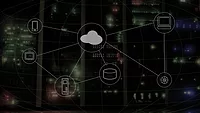Migrating Physical Security to the Cloud: Understanding the Total Cost of Ownership

Have you heard? Cloud is here and it’s there for you to exploit it and reap all the benefits. However, a recent survey indicated that only a fraction of business companies are exploiting the full potential of cloud initiatives… Are you and your security enterprise missing out?
There are innumerable benefits of migrating your physical security to the cloud. One that all enterprises want to hear: it will accelerate your business and improve your security in the cloud. The same study found that 87 percent of organizations said they experienced some business acceleration from their use of cloud services and 52 percent said they found better security in the cloud than in on-premise IT environments. Is it time to ditch your on-premise, outdated safety practices? John Szczygiel, Chief Operating Officer at Brivo, says it is.
“The advantages of migrating physical security to the cloud are similar to taking an Uber ride. You get on-demand service tailored to fit your needs without investing in fixed assets and you shift the burden of ongoing maintenance to the vendor,” Szczygiel says.
Even if you don’t want to eliminate all physical security systems, you can employ the cloud to serve as extra protection against potential (but very costly) cyber or physical breaches. The cloud would be there as a backup, helping enforce data loss prevention. It could help your enterprise share and remotely access data more easily, as well.
We asked John Szczygiel a few questions that you might have and that can help you and your enterprise start seeing benefits from migrating to the cloud.
Why is cloud access a must?
Szczygiel: Using a cloud based access control system enables you to leverage the most powerful technologies in a way that is simple to deploy and cost effective to manage. It allows you to activate standardized access control in locations that you may have considered too remote or too small for an on-premise system, thereby greatly improving the overall security posture of your organization. It is also the most likely way for businesses to make use of new technologies like Artificial Intelligence (AI) which rely on large training data sets in order to be effective.
How can security enterprises get ready for migrating physical security to the cloud?
Szczygiel: They should start by increasing their understanding of the available solutions and think about how cloud-native products can help them solve some of their most difficult problems. Then they should engage with their CTO to understand what computing looks like in their organization over the next five years. In most companies computing and software are considered utilities that are rapidly being outsourced. Once they have both of these perspectives, they will be in a great position to decide how and when to migrate to the cloud.
What should security enterprises be asking of their cloud [Software as a Service (SaaS)] solutions?
Szczygiel: Fortunately many enterprises have clear qualification criteria for their SaaS vendors. Generally these start with asking vendors to demonstrate how they deliver privacy and cybersecurity in their products. They also want to understand the uptime guarantee and the historic track record of system availability. To prove these points, enterprises should ask to see audited SOC or ISO reports for the vendor in question.
How does software as a service (SAAS) help lower the total cost of ownership?
Szczygiel: At its core, SaaS platforms enable customers to share computing infrastructure and the associated operational expenses versus buying and operating it themselves. That is the primary source of the lower total cost of ownership.
What are the dangers of organizational cost of server downtime? (ie. Loss of productivity & the explicit cost of IT and Security staff to remediate failed systems)
Szczygiel: If physical security is compromised by server downtime, the primary risk is outright loss of data and assets. A secondary cost of server downtime is loss of productivity and the corresponding drop in a company's ability to properly support its own customers. Every minute your IT team spends fixing the access control computer is less time spent on more productive endeavors. Another risk of server downtime is the loss of important operational data that may be in scope for IT and operational audits.
How can security enterprises experience ROI by using SAAS and migrating physical security systems to the cloud?
Szczygiel: In addition to the cost savings of SaaS there are other direct benefits including; enabling consistent processes over large and decentralized workspaces, facilitating access to data via current web and mobile tools, simplifying connections to other business applications and the important ability to stay current with your access control software.
Looking for a reprint of this article?
From high-res PDFs to custom plaques, order your copy today!






